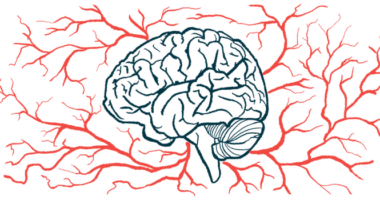Veto T-cells Boost Success of Stem Cell Transplant for SCD

Adding Cell Source’s special class of immune cell, Veto T-cells, to blood stem cells from an unrelated donor led to a successful transplant and to the production of normal red blood cells in a mouse model of sickle cell disease (SCD), the company announced.
The preclinical Cell Source-sponsored study supports the use of Veto T-cells to overcome the current challenges of blood stem cell transplants from unrelated donors, and highlights its curative potential for SCD.
“Our Veto Cell based protocol could overcome the lack of suitable donors, treatment toxicities, and graft-related challenges. This may have the potential to deliver a safe, effective, and durable curative treatment for patients with SCD,” Dennis Brown, chairman of Cell Source, said in a press release.
A Phase 1/2 trial (NCT03622788) is assessing the safety and efficacy of Veto T-cells at boosting the effectiveness of stem cell transplants in patients with blood-related diseases, including SCD. The trial, underway at the M.D. Anderson Cancer Center, Texas, aims to recruit 24 participants. More information about enrollment can be found here. The trial is expected to conclude by July.
The preclinical study, “Correction of murine sickle cell disease by allogeneic haematopoietic cell transplantation with anti-3rd party veto cells” was published in the journal Bone Marrow Transplantation.
An allogeneic hematopoietic stem cell transplant (Allo-HSCT) currently is the only available curative treatment for SCD. In this case, blood-forming stem cells are collected from a genetically matched donor, most often a sibling or an unrelated donor, and inserted into the patient to restore the production of normal red blood cells.
However, the scarcity of such donors is a major challenge. Moreover, Allo-HSCT can lead to graft-versus-host disease (GvHD), a condition in which immune cells, especially T-cells (cells that fight infections and cancer), from the donor are transplanted together with blood stem cells and view the recipient’s body as foreign, reacting against it. Conversely, the recipient’s immune system also may see the transplanted cells as a threat and react against them, leading to transplant rejection.
To reduce the chances of rejection, patients often are required to complete a conditioning regimen before receiving the transplant. The main goal of these conditioning regimens, which may include a combination of medications, chemotherapy, and/or radiation, is to suppress the patient’s immune system to the point it no longer can reject the transplanted cells.
While high-intensity conditioning regimens have been linked with increased toxicity, reduced-intensity conditioning regimens are typically safer, but less effective at preventing transplant rejection.
The risk of GvHD, in theory, also may be eliminated by resorting to T-cell-depleted HSCTs, meaning stem cell transplants that underwent a special treatment to remove most, if not all, donor T-cells. However, these transplants have been found more likely to fail.
One way to achieve a state of immune tolerance is to use donor T-cells with “veto” activity. This refers to the ability that certain T-cells, called Veto cells, have to halt or “veto” the harmful attacks of other T-cells. The Veto cells accompany the transplanted cells and work as a “decoy” by attracting the host’s attacking T-cells, which would reject the transplant and destroy them before they are able to do so.
According to Cell Source, Veto cells can increase the likelihood of transplant success, even when the HSCT comes from an unrelated donor who does not completely match the recipient, and allow for the use of a less-potent conditioning regimen that poses fewer risks to patients.
In this study, researchers at MD Anderson assessed the effectiveness of Cell Source’s proprietary Veto cells when given along with transplanted stem cells to a mouse model of SCD.
The animals received a T-cell-depleted HSCT from a mismatched donor, followed by a conditioning regimen with irradiation along with a short-term treatment with rapamycin. This previously was shown to facilitate the transplant process. A group of animals were given the donor-derived Veto cells, while another group remained untreated and served as controls.
First, researchers saw that animals treated with the Allo-HSCT plus the Veto cells — called chimeric mice — had a transplant success ranging from 77% to 94%, while no success was seen in control mice. This success percentage reflected the animals’ ability to produce donor-derived blood cells.
Chimeric animals continued showing signs of a successful transplant even after 318 days.
Moreover, chimeric animals showed normalization of key SCD parameters, including a normalization of the percentage of reticulocytes — immature red blood cells that usually are at increased levels in people with SCD — as well as in the concentration of white blood cells and hemoglobin.
Analysis of the animals’ organs showed that chimeric mice had significantly smaller spleens, while those of control animals remained enlarged.
Moreover, tissue analysis revealed that contrary to control mice, chimeric mice had no sickled red blood cells trapped in their spleen and kidneys, and their organs had a normal architecture.
Overall, the results of this preclinical study “demonstrate that our curative approach to SCD may potentially translate to safe and efficacious treatment in human patients,” said Brown.






